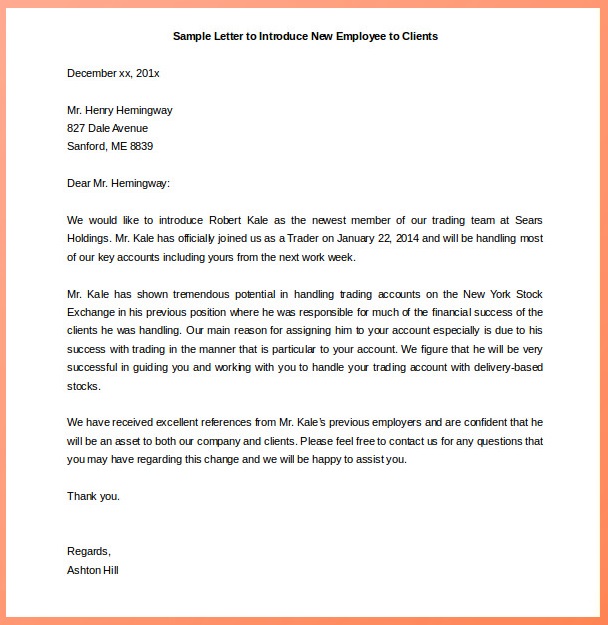
Following quite a while of weighty occupation looking, you’re nearly there!
You’ve idealized your resume.
You’ve short-recorded the coolest positions you need to apply for.
You’ve even had a companion train you for each and every inquiry question out there.
However at that point, before you can send in your application and tap out, you recollect that you really want to compose an introductory letter as well.
So presently, you’re stuck gazing at a clear page, pondering where to begin…
Try not to overreact! We take care of you. Composing an introductory letter is significantly easier than you could naturally suspect.
In this aide, we will show you how to compose an introductory letter that lands you enough position.
We will cover:
What Is an Introductory Letter?
The most effective method to Compose the Ideal Introductory Letter, Bit by bit
15+ Occupation Winning Introductory Letter Models
From there, the sky is the limit!
We should get everything rolling.
What Is an Introductory Letter?
An introductory letter is a record that you submit as an aspect of your responsibilities application, close by your resume or CV.
The reason for an introductory letter is to present you and momentarily sum up your expert foundation. By and large, it ought to be around 250 to 400 words in length.
A decent introductory letter should dazzle the employing chief and persuade them you personally merit talking with as a competitor.
All in all, how could your introductory letter accomplish this?
It, most importantly, ought to supplement your resume, not duplicate it. Your introductory letter is your opportunity to expound on significant accomplishments, abilities, or whatever else that your resume doesn’t give you the space to cover.
For instance, on the off chance that you have a work hole on your resume, the introductory letter is an incredible spot to make sense of why it worked out and how it assisted you with developing personally.
On the off chance that this is your most memorable time composing an introductory letter, expounding on yourself could appear to be muddled. Yet, just sit back and relax — you needn’t bother with to be really imaginative or even a decent essayist.
You should simply follow this attempted and tried introductory letter structure:
Header. Add all the important contact data at the highest point of your introductory letter.
Formal hello. Pick a proper method for hello your interest group.
Presentation. Present yourself in the initial section and make sense of your advantage in the job.
Body. Expound on for what reason you’re really amazing contender for the gig and a decent counterpart for the organization. Zero in on “selling” your abilities, accomplishments, and significant expert encounters.
End. Sum up your central issues and wrap it up expertly.
Presently, we should investigate an illustration of an introductory letter that follows our design impeccably:
When Would it be a good idea for you to Compose an Introductory letter?
You ought to constantly incorporate an introductory letter in your request for employment, regardless of whether the recruiting chief never understands it. Presenting an introductory letter is pretty much as significant as presenting a resume to seem to be a serious up-and-comer.
On the off chance that the business demands an introductory letter as a feature of the screening system, not sending one is a tremendous warning and will most likely get your application thrown into the “no” heap right away.
Then again, in the event that the work promotion doesn’t need an introductory letter from the up-and-comers, adding one shows you exceeded all expectations.
Investing the energy to compose an introductory letter can separate you from different competitors with comparative expert experience and abilities, and it really might influence the employing supervisor to call you for a meeting on the off chance that you get everything done well.
The most effective method to Compose the Ideal Introductory Letter
Since it has become so obvious what an introductory letter is, now is the ideal time to figure out how to think of one!
We’ll go through the cycle exhaustively, bit by bit.
#1. Pick the Right Introductory Letter Format
A decent introductory letter is tied in with having the right first effect.
All in all, what’s a superior method for having a decent effect than a very much designed, a la mode layout?
Simply pick one of our hand-picked introductory letter layouts, and you’ll be good to go in the blink of an eye!
As a little something extra, our instinctive computer based intelligence will try and give you ideas on the most proficient method to further develop your introductory letter as you compose it. You’ll have the ideal introductory letter done in minutes!
#2. Put Contact Data in the Header
Likewise with a resume, it’s essential to begin your introductory letter with your contact subtleties at the top. These ought to be in your introductory letter’s header, isolated perfectly from the majority of your text.
Here, you need to incorporate all the fundamental contact data, including:
Complete Name. Your first and last name ought to stand apart at the top.
Work Title. Match the expert title under your name to the specific work title of the position you’re applying for. Employing chiefs frequently enlist for a few jobs without a moment’s delay, so giving them this sign about which job you’re after assists things with going smoother.
Email Address. Continuously utilize an expert and simple to-spell email address. In a perfect world, it ought to consolidate your first and last names.
Telephone Number. Add a number where the recruiting director can undoubtedly contact you.
Area. Add your city and state/country, no requirement for additional subtleties.
Important Connections (discretionary). You can add connects to sites or online entertainment profiles that are applicable to your field. Models incorporate a LinkedIn profile, Github, or an internet based portfolio.
Then, at that point, now is the right time to add the beneficiary’s contact subtleties, for example,
Employing Supervisor’s Name. In the event that you can track down the name of the recruiting director, add it.
Recruiting Supervisor’s Title. While there’s no mischief recorded as a hard copy “employing chief,” on the off chance that they’re the top of the division, we suggest you utilize that title likewise.
Organization Name. Make a point to compose the name of the organization you’re applying to.
Area. The city and state/nation are normally sufficient data here, as well.
Date of Composing (Discretionary). You can incorporate the date you composed your introductory letter for an additional expert touch.
#3. Address the Recruiting Administrator
When you’ve appropriately recorded all the contact data, now is the ideal time to begin composing the substance of the introductory letter.
The main thing you really want to do here is to address your introductory letter straightforwardly to the employing director.
You need to address the recruiting chief by and by, as a matter of fact.
Disregard the old “Dear Sir or Lady” or the unoriginal “To The responsible party in question.” You need to give your future supervisor a decent impression and show them that you did all necessary investigation prior to sending in your application.
Nobody needs to enlist a task searcher who simply spams 20+ organizations and expectations something sticks with their conventional methodology
All in all, how would you figure out who’s the employing director?
In the first place, actually take a look at the specific employment promotion. The recruiting supervisor’s name may be recorded some place in it.
On the off chance that that doesn’t work, check the organization’s LinkedIn page. You simply have to look into the top of the important division you’re applying to, and you’re good to go.
For instance, assuming that you’re going after the job of Specialized Expert at Novorésumé. The recruiting director is most likely the Head of Correspondences or the Main Interchanges Official.
Furthermore, that’s it! You have your recruiting director.
Be that as it may, suppose you’re going after a job as a server. All things considered, you’d be searching for the “eatery chief” or “food and refreshment director.”
In the event that the outcomes don’t think of anything, have a go at looking at the “Group” page on the organization site; there’s a decent opportunity you’ll essentially track down the perfect individual there.
Try to address them as Mr. or Ms., trailed by their last name. In the event that you don’t know about their orientation or conjugal status, you can simply adhere to their complete name, as so:
Be that as it may, imagine a scenario in which you actually can’t find the recruiting chief’s name, regardless of where you look.
No problem. You can guide your introductory letter to the organization, division, or group in general, or simply avoid the recruiting director’s name.
#4. Compose an Eye-Getting Presentation
Initial feelings matter, particularly with regards to your pursuit of employment.
Recruiting supervisors get hundreds, now and again even thousands, of utilizations. Chances are, they won’t peruse each and every introductory letter start to finish.
In this way, grabbing their eye from the absolute first paragraph is fundamental.
The most serious issue with most opening sections is that they’re typically incredibly nonexclusive. Here is a model:
See the issue here? This initial passage expresses nothing with the exception of the way that you’ve worked the occupation previously.
Also, do you have any idea about who else has comparable work insight? The wide range of various candidates you’re rivaling.
All things considered, you need to begin with a portion of your top accomplishments to catch the peruser’s eye. What’s more, to convey the idea, the accomplishments ought to be pretty much as applicable as conceivable to the position.
Your initial passage ought to likewise show the employing chief a piece about why you need this particular work. For instance, notice how the occupation connects with your arrangements for the future or how it can assist you with developing expertly. This will show the employing chief that you’re not simply applying left and right — you’re really excited about getting this specific job.
The subsequent competitor begins with how they can help the organization later on and promptly records a noteworthy and pertinent accomplishment. Since they’re knowledgeable about a similar industry and intrigued by finance, the recruiting supervisor can see they’re not only an irregular candidate.
From this presentation, any reasonable person would agree that the employing chief would peruse the remainder of this competitor’s introductory letter.
#5. Utilize the Introductory Letter Body for Subtleties
The following piece of your introductory letter is where you can meticulously describe what separates you as a certified contender to get everything done.
The most compelling thing you really want to recall here is that you shouldn’t make everything about yourself. Your introductory letter should show the employing director how you connect with the gig and the organization you’re applying to.
Regardless of how cool you make yourself sound in your introductory letter, on the off chance that you don’t fit it to match what the employing administrator is searching for, you’re not getting a meeting.
To get this right, utilize the work promotion as a kind of perspective while composing your introductory letter. Make a point to feature abilities and accomplishments that match the occupation requireme




